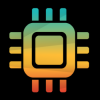The SDK-80 is an extremely flexible design and allows easy interface to an existing application or custom interface development.
An extensive system monitor is included in a pre-programmed ROM for general software utilities and system diagnostics.
The 8080 Microcomputer Systems would be extremely beneficial to the user that he read and understand the operation of the 8080A and associated peripheral components prior to beginning the assembly of the SDK-80.
Every effort has been made to allow the SDK-80 to interface directly with most common terminals, but with the wide array of display terminals available it is not possible to perfectly interface each one with the SDK-80 hardware and software.
The user should carefully examine the requirements of his particular terminal interface and adapt the SDK-80 accordingly.
FUNCTIONAL DEFINITION
The SDK-80 is shipped with a complement of parts that allows the user to construct an operating small system with the following features:
- CPU: 8080A (see 8080 User’s Manual for details)
1.95 pis Instruction Cycle - RAM: 8111 (static 256 x 4) 2 included for 256 byte storage
- ROM: 8708/8308 (1K x 8)
1 Pre-programmed system monitor
1 User-programmed (erasable 8708) - I/O: 8251 (Programmable Communication Interface)
1 Serial communication with terminal 8255 (Programmable Peripheral Interface)
1 General user I/O, 24 lines - Serial TTL
Interface: 20mA current loop (TTY)
RS-232 (EIA) - Baud User-selected by jumper or switch
Rate: 75,110,300, 600, 1200, 2400, 4800 - Interrupt: Single level, vectored (RST-7)
The SDK-80 has many designed-in features for expandability without the necessity of cutting PC runs or adding extra logic. The maximum configuration of the SDK-80 is as follows:
- RAM: 8111 (static 256 x 4)
Up to 8 for 1k x 8 storage - ROM: 8708/8308 (1K x 8)
Up to 4 for 4K x 8 storage - I/O: 8255 (Programmable Peripheral Interface)
2 General user I/O, 48 lines
Expanding the SDK-80 to the maximum configuration is a simple matter of purchasing the extra memory and I/O components and installing them on the board.






